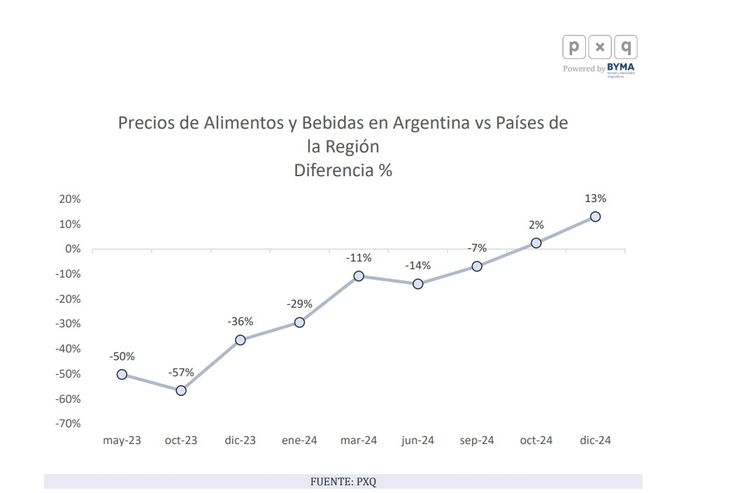The statements of recognized economists and international banks altered the humor of the Casa Rosada. A wide sector of the establishment agrees that the exchange leg is the weakest of the libertarian plan. This vision was reflected in recent days in the publications of former Minister Domingo Cavallo in his blog and in a work of the Bank of America that generated murmurs at the tables.
The government does not tire of denying it, but In the market many believe that part of the international monetary fund staff shares the vision that changes in the program must be introduced. The body itself has been pointing out in some of its Papers and for example, the former representative for the Western hemisphere, Alejandro Werner, left it in writing a few days ago.
In the midst of diverse and no news with the background, Caputo went out to reject the idea that the exchange rate is late. “Some prices are advanced,” he said in an interview with LN+ and said that this situation takes place due to the lack of international competition that makes it possible for businessmen to maintain higher prices than in other countries.
Off -side prices or backward dollar
A report by the PXQ consultant rebates that argument. Part of the premise that the Argentine economy increased its degree of openness in the last year due to a set of tariff measures, paraarancelaria and the elimination of restrictions on foreign trade.
In the firm that leads the former Deputy Minister of Economy Emmanuel Álvarez Agis have been monitoring a set of comparable productss in different countries of the region. Hence a table that compares the situation in Argentina with Brazil, Chile and Uruguay at similar points of sale.
Whatsapp image 2025-02-08 at 16.42.25.jpeg
The basket in question was in October 2023 57% cheaper in Argentina than in the rest of the countries and in December 2024 it was 13% more expensive than in neighbors. The difference in the heat map becomes even more noticeable when the comparison is direct with Brazil.
WhatsApp Image 2025-02-08 at 16.45.17.jpeg

“The Argentine economy is more open, our greedy entrepreneurs are more threatened by competition, thus and everything, products in the local market are more expensive,” the report ironizes. And it finishes: “The prices were not advanced, the exchange rate was delayed.”
Dollar deflation: Caputo’s obsession
The idea that the dollar is not late and prices are those that are offsyide, naked an objective that orbits the economic team: Deflation in dollars. Economy believes that following the slowdown in inflation via its plan with anchors in the monetary, fiscal and exchange rate, In an upcoming stage of the program the prices of some products expressed in dollars should fall.
From this month the official exchange rate will move at a rate of 1% monthly. So for that to happen, at least at this stage, prices should run below that threshold. Javier Milei hopes that January inflation will drill a new nominal floor, but neither the most optimistic suggests to start with zero.
The rise in the flesh, the food that weighs most inside the basket that measures Indec, probably does not help in February and March is a month with a high seasonality for the return to classes. Despite the flood of imports, the deflation in dollars will have to wait.
The Chinese corn, the noodles of Albania and the orange of Egypt.
The commercial opening stages with exchange assessment are not new and leave repeated images such as the Appearance of imported products from exotic countries, even in sectors where Argentina is very competitive.
In recent days, Choclo landing in cans that comes from China was viralized on social networkswith the logistics cost that makes this in Albania. In the primary sector, lemons and oranges of Egypt are highlighted along with tomatoes, onion and carrot that arrive from neighboring countries.
https://x.com/claudiozlotnik/status/1887152861684924698
As we said weeks ago, the import of food and beverages grew by 82% year -on -year in December and marked a new record: US $ 282 million. The volumes are still relatively low, but the phenomenon takes strength month by month to the heat of the exchange rate appreciation. Despite that, Argentina is still expensive in dollars.
Source: Ambito




